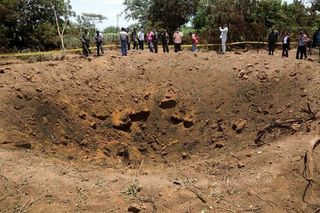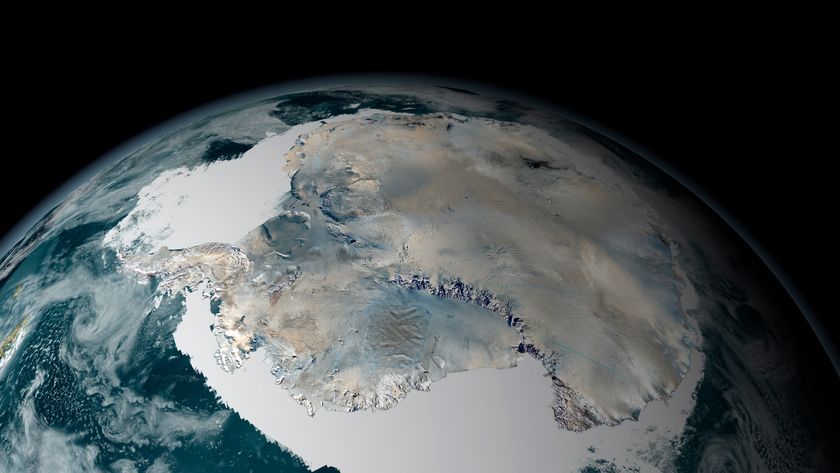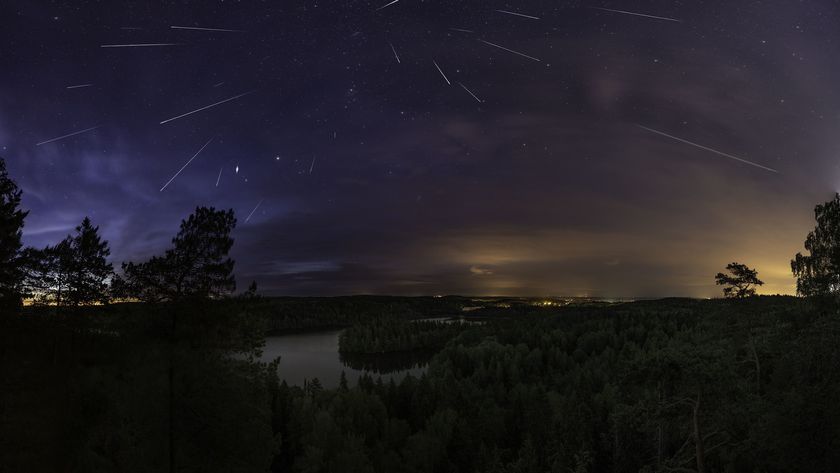Nicaraguan officials say a meteorite gouged out a crater near the nation's capital city over the weekend, but scientists aren't so sure.
A committee formed by the Nicaraguan government determined that a new, 39-foot-wide (12 meters) crater found near the capital Managua's international airport was blasted out by a space rock strike Saturday night (Sept. 6), the Associated Press reported.
Some Managua residents reported hearing a loud boom on Saturday, which would be consistent with a meteorite impact. But other details warrant a healthy dose of skepticism, said Bill Cooke, head of the Meteoroid Environment Office at NASA's Marshall Space Flight Center in Huntsville, Alabama. [Nicaraguan Crater Possibly Caused by Meteorite (Video)]
"Something that produced a crater this big should have also produced an incredibly bright fireball in the night sky," Cooke said. "And no one reports a fireball, even though it was near midnight under scattered clouds."

Further, Managua is a big city, with lots of potential witnesses to such a night-sky sight. People saw a bright fireball the last time Cooke can recall a meteorite blasting out a crater on Earth, in September 2007 near the Peruvian village of Carancas — and that impact occurred in broad daylight.
A meteorite strike would also likely leave blackened fragments of the impacting body behind as evidence, both Cooke and meteor expert Peter Jenniskens said.
"If this crater has anything to do with a meteoroid impact, I would expect meteorites to be found in and around the crater," Jenniskens, of the Search for Extraterrestrial Intelligence (SETI) Institute in Mountain View, California, told Space.com via email.
Sign up for the Live Science daily newsletter now
Get the world’s most fascinating discoveries delivered straight to your inbox.
No such pieces have been reported, and none are visible in photos of the crater, Cooke said.
"So I'm kind of skeptical of a meteoritic origin for this crater," he said.
If a space rock did indeed carve out the Nicaraguan crater, the meteorite was likely relatively small — about 3 feet (1 m) wide if made of iron, and somewhat larger if composed of rocky material, Cooke added.
Some Nicaraguan officials have speculated that the purported meteorite may be a piece of the asteroid 2014 RC, which flew by Earth on Sunday (Sept. 7), the AP reported. But that is not the case, experts said.
"For those wondering, the event in Nicaragua (poss meteorite?) is unrelated to asteroid 2014 RC. Different timing, different directions," NASA officials wrote today (Sept. 8) via the @AsteroidWatchTwitter account, which is run by the space agency's Near-Earth Object Office at the Jet Propulsion Laboratory in Pasadena, California.
Follow Mike Wall on Twitter @michaeldwall and Google+. Follow us @Spacedotcom, Facebook or Google+. Originally published on Space.com.














